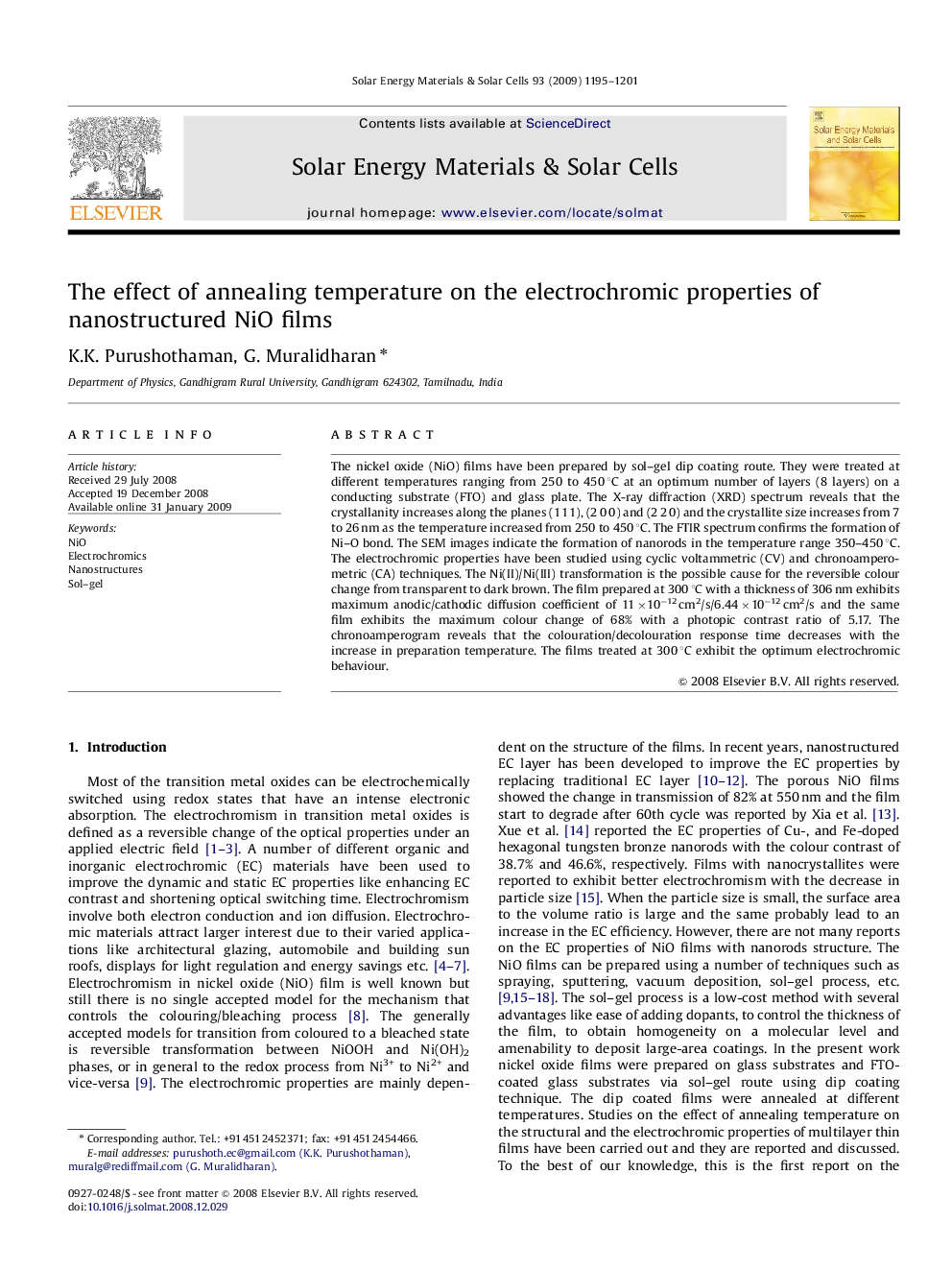| Article ID | Journal | Published Year | Pages | File Type |
|---|---|---|---|---|
| 80451 | Solar Energy Materials and Solar Cells | 2009 | 7 Pages |
The nickel oxide (NiO) films have been prepared by sol–gel dip coating route. They were treated at different temperatures ranging from 250 to 450 °C at an optimum number of layers (8 layers) on a conducting substrate (FTO) and glass plate. The X-ray diffraction (XRD) spectrum reveals that the crystallanity increases along the planes (1 1 1), (2 0 0) and (2 2 0) and the crystallite size increases from 7 to 26 nm as the temperature increased from 250 to 450 °C. The FTIR spectrum confirms the formation of Ni–O bond. The SEM images indicate the formation of nanorods in the temperature range 350–450 °C. The electrochromic properties have been studied using cyclic voltammetric (CV) and chronoamperometric (CA) techniques. The Ni(II)/Ni(III) transformation is the possible cause for the reversible colour change from transparent to dark brown. The film prepared at 300 °C with a thickness of 306 nm exhibits maximum anodic/cathodic diffusion coefficient of 11×10−12 cm2/s/6.44×10−12 cm2/s and the same film exhibits the maximum colour change of 68% with a photopic contrast ratio of 5.17. The chronoamperogram reveals that the colouration/decolouration response time decreases with the increase in preparation temperature. The films treated at 300 °C exhibit the optimum electrochromic behaviour.
